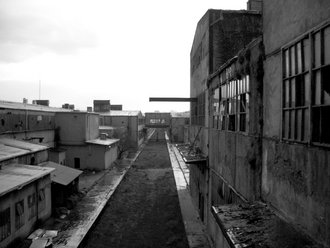Loss of Heritage on Industrial Landscape Transformation. Case Study: Conservation and Regeneration of Seka Paper Factory in Izmit-Turkey

Onur Basri Camurlu
Landscape Architect
An industrial landscape which has been working for human needs since the industrial revolution with its industrial culture, is not only evidence of history, but it is also a social brand, working as a catalyst for its surrounding. It is a means, as without industrial landscape in the environment, the surrounding place would not exist/survive, because the industrial function is working as a catalyser economically, technologically, politically and culturally. In this sense industrial landscapes would be the hearth of environment and should preserve the functional heritage.
On the other hand, the transformation approaches to these industrial landscapes can be a reason for losing heritage identity, because transformation is defining a new function of the existing body without sustaining the functional heritage which has been a catalyst for the environment and human needs. In this point, this thesis explains the transformation of industrial landscape. When the transformation does not sustain the formal functional use as a catalyst for itself and the environment, it should be called: loss of heritage in transformation.
THEORETICAL BACKGROUND
There are many international industrial landscape transformation projects which have been practiced, some in Turkey. The transformation approach to the industrial landscape should be defined with a new regeneration model. As a theoretical point the industrial landscape is a catalyser not only for itself but also for the environment/city in economical, technological, political and cultural development. And also this model can be use for similar future approaches.
SUBJECT
Conservation and Regeneration of Seka Paper Factory in Izmit-Turkey
Although industrial landscape as a heritage concept has been applied in Western countries for many years, the subject has been recognised in Turkey only over the last few years. How/Why can Industry, Landscape and Heritage concepts come together? How was the Industrial Revolution carried out from the Ottoman era up to 20th Century Turkey? What does industrial Heritage mean and how can this be compared with the understanding in Turkey? For the reason of having different maturity/experience differences, the practiced or ongoing projects have been faced with many challenges indeed. What are the challenges to developing a regeneration project in Turkey?
Istanbul with its surrounding became an urban settlement experiencing most intense industrial interferences and central state power during the Ottoman Empire. Although during the era of Republic of Istanbul and its extension city of Izmit kept its reputation as an industrial focus, they failed to show the same accomplishment to recognize the industrial heritage. What are the Numbers for Industrial heritage sites in Turkey?
The reason for this failure is the different cultural understanding in line with Turkeys peculiar conditions and circumstances. In this point, this thesis is focusing on Seka Paper Factory in Izmit which is the tension of the thesis.
This thesis states, the on-going transformation approach for the Seka Paper Factory does not sustain the heritage. There is a loss of heritage and this thesis is creating a model by observing the transformation approach. As a theoretical point, if the regeneration model sustains the formal dynamics economically, socially, technologically and politically, not only will the identity it has successfully live, but also the identity it is defining for its environment. By sustaining the functional heritage, what should the regeneration model look like?
December 2009
